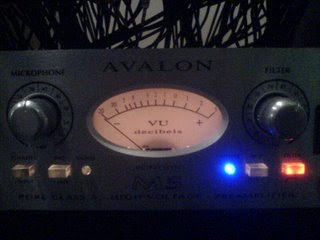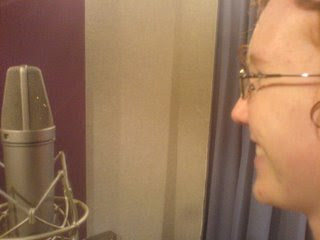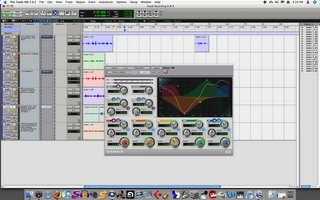This was the Avalon setting for all the recordings:

Our first recording was done on the Neumann condenser mic. It sounded a little bland to start with. Clear but bland. Sung close to mic
So to try and fix that, we used the compressor. Altered 1st recording
And a picture of the settings on the computer and the position of the mic and pop filter:


The last one we did on the condenser was without the pop filter and was sung off-axis. See the picture. (I look stunning as always... hmm...)

This one has no effects. I don't like it as much as the first recording, but I'd feel pressed to say why. It just doesn't feel totally right.
Condenser sung off axis
The final two recordings we did were on a Shure SM58. We wanted to compare the dynamic mic to the condenser. Personally, I thought there was too much boom, and it was too bassy for my liking. Also the plosives and sibilance was more obvious, but that could be because of the pop filter.
Singing into the dynamic
We then recorded Doug speaking into the dynamic mic, making the pops even more apparent, but then went overboard on the EQ, making a radio, almost static sound. I really like this sound as an effect in music, and now can re-create that when I'm recording my major piece.
Spoken into dynamic, EQ to the max
And a screen shot of the EQ plug in:

I really enjoyed this exercise. It's good to see how these things work, and to work it out myself. Of course, the chance to be recorded was pretty awesome too!
Over and out.
*(1) Steve Fieldhouse, Monday, 22nd April, 2007. Audio Arts Lecture
